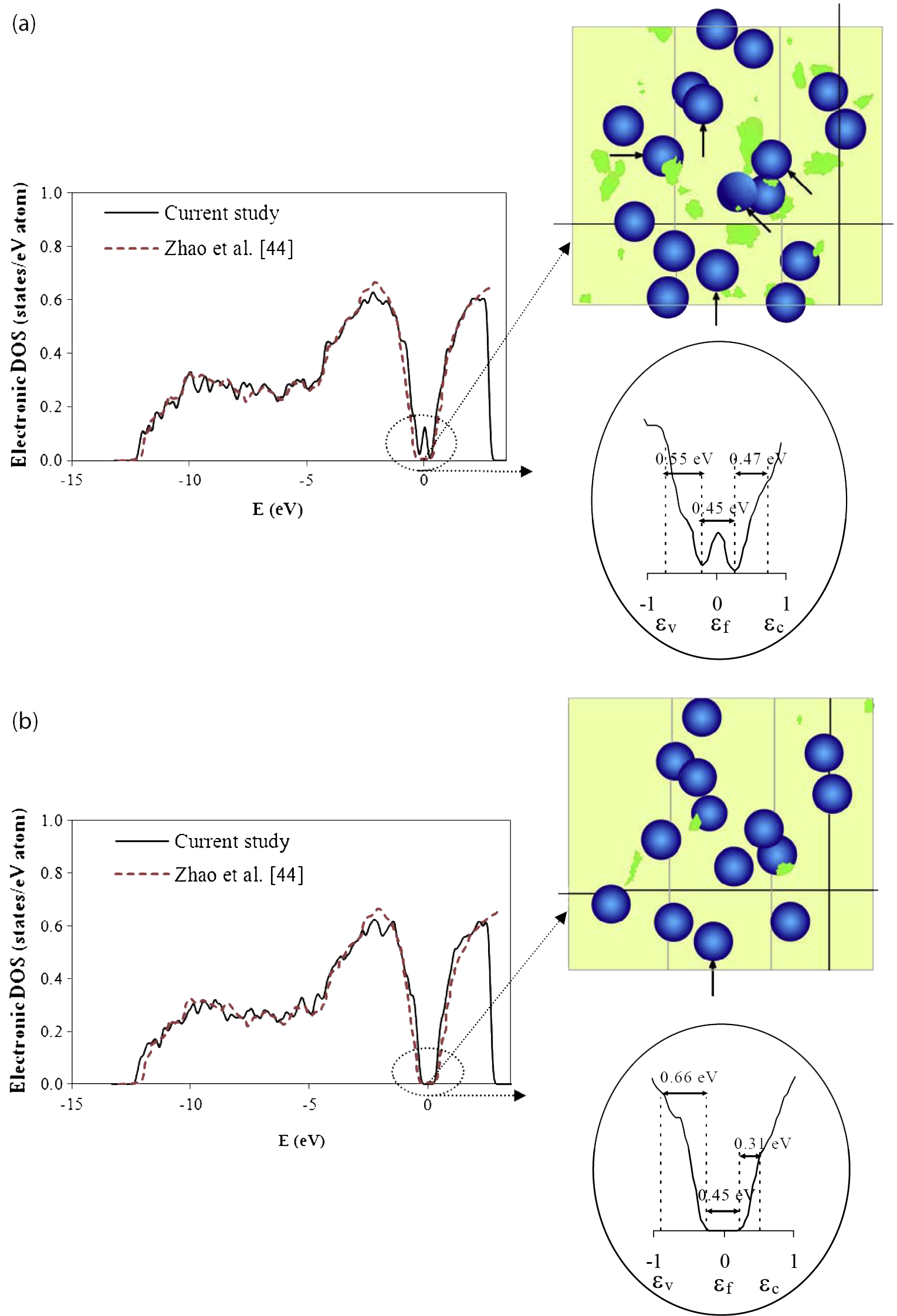Hossein M. Shodja

First principles density functional theory (DFT)-based molecular dynamics (MD) is used to study some physical and electronic properties of amorphous silicon (a-Si) samples, as-quenched and annealed containing dangling and floating bonds (pertinent to the threefold- and fivefold-coordinated defects, respectively) as well as distorted tetrahedral bonds. Surprisingly, except for the work of Pantelides (1986) who gave a rough estimate for the effective electron correlation energy, Ueff of a floating bond on the fivefold-coordinated Si, to date, there are no theoretical studies in the literature for the calculation of Ueff pertinent to this type of defect. In this work, Ueff for each type of defect, namely, threefold- and fivefold-coordinated atoms which are present in our generated annealed a-Si sample at 300 K is calculated by the current ab initio framework. We found that, Ueff for the fivefold-coordinated Si varies from +0.32 to +0.41 eV, whereas for the threefold-coordinated Si it ranges between -0.33 to +0.04. The electronic, optoelectronic, and transport properties of a-Si semiconductors are directly influenced by gap tuning which in turn is controlled by the applied strains. The effects of temperature and strain on the mobility gap and the electronic density of states (DOS) for the a-Si samples are of particular interest. For the unstrained as-quenched and annealed samples at T = 0 K, the mobility gap is calculated to be equal to 1.42 and 1.47 eV, respectively; whereas, at T = 300 K these values change to 1.17 and 1.24 eV, respectively. At T = 0 K, for both samples under the uniaxial tensile strains below 0.070, the calculated mobility gap is about 1.4 eV which sharply decreases by applying strain beyond 0.070. As it will be seen, the gap regions for both the unstrained sample and the strained sample with ϵ33 = 0.070 contain midgap states, but for the strained samples with the higher strains of ϵ33 = 0.140 and 0.210 the midgap states disappear.

The electronic DOS pertinent to the samples: (a) annealed at 0 K, and (b) as-quenched at 0 K calculated by the current study (solid line) is compared with the DOS of pure a-Si (dashed line) obtained by Zhao et al. [44]. The details of the mobility gap region as well as the floating bonds and the associated squared modulus of wave functions (clouds) for the samples at 0 K obtained in the present work are also displayed.
Amorphous silicon, Gap tuning, Effective electron correlation energy, First principles Kohn–Sham DFT-based molecular dynamics